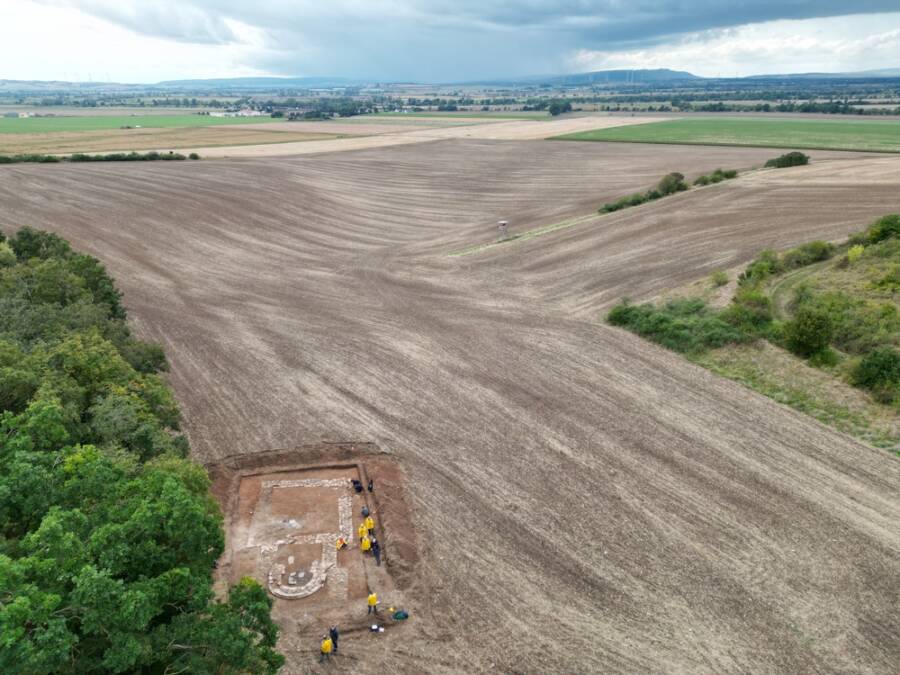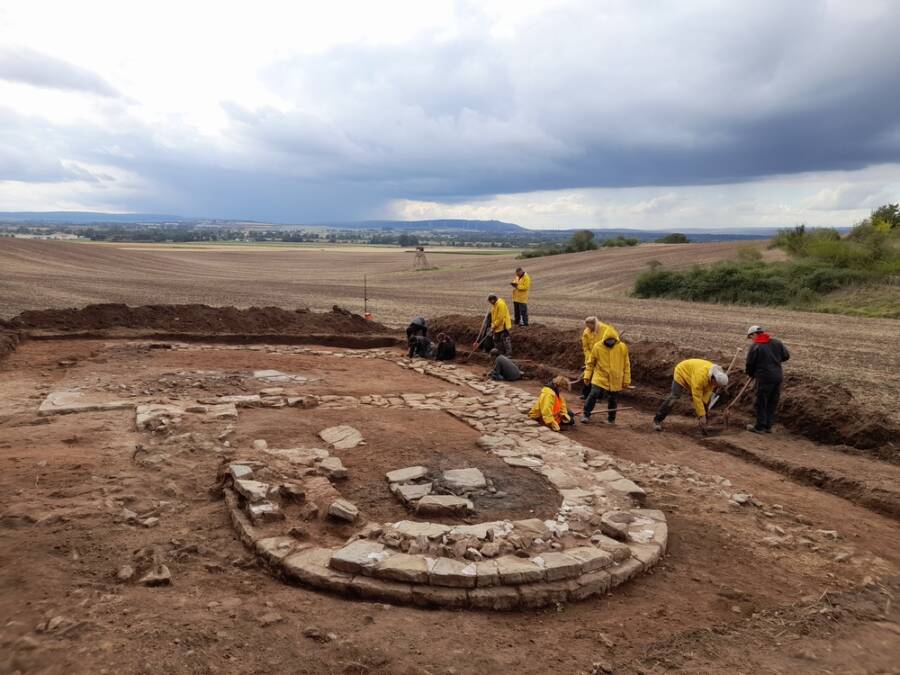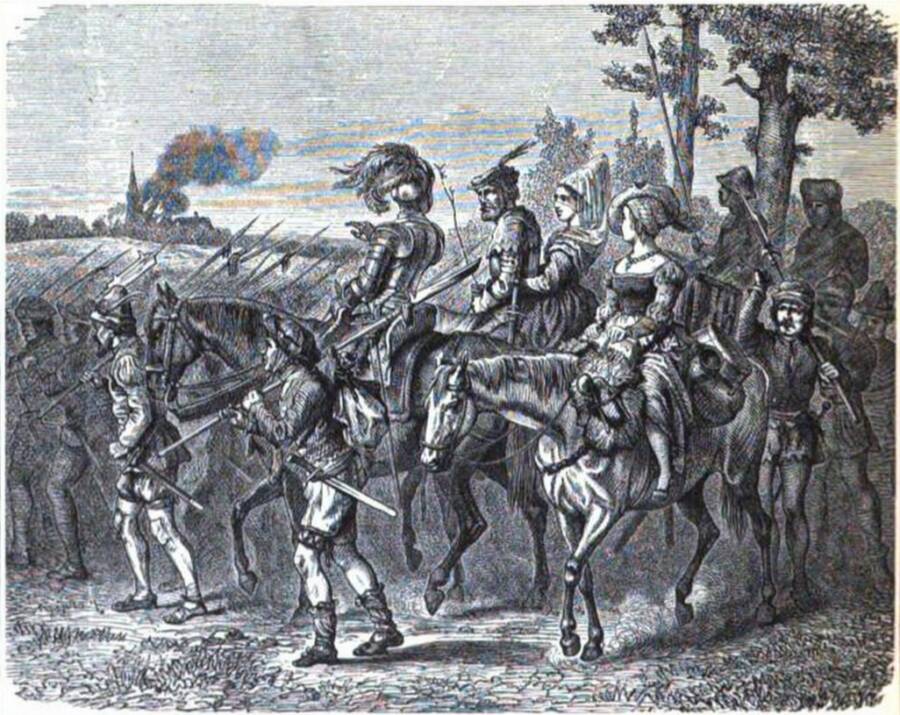Unearthed Secrets: 25 Children’s Graves and Thousands of Artifacts Discovered Beneath Medieval German Chapel
Ever wonder if there’s such a thing as “holy rainwater”? Well, archaeologists digging around the ruins of a medieval chapel in Germany stumbled upon something eerily fascinating — children’s graves purposely placed where rainwater from the chapel would wash over them. That’s right, these weren’t just random burials; they’re soaked in faith and superstition, literally. The Mallerbach Chapel, standing since the 12th century until it went up in flames in 1524, has revealed not only silver coins and knives but a touching glimpse into a long-lost community’s hopes for unbaptized children’s souls. It’s like history decided to sprinkle a little holy water on us all — except this time, it’s from actual rain. Curious how this all ties to rebellion, faith, and forgotten villages? Buckle up, because this story’s got layers you didn’t see coming.
The children’s graves were positioned so that “holy” rainwater would run over them.

Robert Prust/Saxon-Anhalt State Office for Monument Preservation and ArchaeologyMallerbach Chapel stood from around the 12th century until it was destroyed in 1524.
Archaeologists have uncovered thousands of artifacts within the ruins of a medieval German chapel, including 50 graves — half of which belonged to children.
The discovery was made at the former Mallerbach Chapel near Allstedt, Germany, which was destroyed in 1524. The objects and remains found there are shedding light on the long-forgotten church, as well as a village that once stood nearby.
The Children’s Graves Found At Mallerbach Chapel
Mallerbach Chapel was rediscovered in 2024, exactly 500 years after it was destroyed in 1524. Since then, archaeologists have uncovered artifacts ranging from silver coins dating back to the 15th and 16th centuries to belt buckles, knives, horseshoes, ceramic shards, and lead bullets.
Excavations also revealed a large cemetery with at least 50 graves. “Particularly noteworthy are approximately 25 children’s graves directly at the eastern end of the church,” project leader Felix Biermann, who works with the Saxony-Anhalt State Office for Monument Preservation and Archaeology, told German media. “Newborns, stillborn children, and small children were buried here.”

Robert Prust/Saxon-Anhalt State Office for Monument Preservation and ArchaeologyArchaeologists found dozens of children’s graves buried at the east end of the chapel, where rain water would flow from the building and over the burials to create a “holy water effect.”
These graves were placed in such a way that they were in the path of rainwater that ran off of the chapel. Researchers believe this was intentional and held religious significance.
“Some graves were located where rainwater flowed from the church, creating a kind of holy water effect,” Biermann explained. “Apparently, unbaptized children were buried here in the hope of Mary’s protection.”
In addition to the 25 children’s graves in the cemetery, archaeologists also uncovered the remains of two children from a noble family. One of these graves contained a yellow clay pot decorated with red paint from the 12th century.
These graves all date back to before Mallerbach Chapel was destroyed in 1524 — a fascinating incident that sparked these excavations to begin with.
The History Of Mallerbach Chapel And The German Peasants’ War
Mallerbach Chapel has gone through many changes over the centuries. It was built around the 12th century to be used as the village church. It later became a roadside chapel before it transitioned into a pilgrimage church.
On March 24, 1524, the chapel was looted and burned down by residents of Allstedt. Their actions were likely influenced by the revolutionary sermons of theologian Thomas Müntzer, a German preacher who opposed Martin Luther and the Catholic Church and was known for sparking uprisings, in the early days of the German Peasants’ War.

Public DomainThe German Peasants’ War was a series of peasant uprisings in central Europe between 1524 and 1525.
The burning of Mallerbach Chapel marks one of the earliest examples of the peasant uprisings that occurred in Germany throughout the 16th century. The recent excavations at the church are part of an ongoing project aiming to reexamine that period of history in commemoration of its 500th anniversary.
In addition to the artifacts and graves, archaeologists also identified the remains of the former Mallerbach village, which was abandoned sometime in the 14th century. They also found the remains of the cellar from the home of a watchman who worked at the church until that fateful day in 1524.
“There was a lively life here,” said Biermann.
After reading about the graves found at Germany’s Mallerbach Chapel, learn about the gong farmers who dealt with human waste in medieval times. Then, take a look at these 12 bejeweled skeletons found in European churches.




















Post Comment